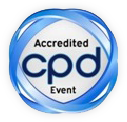Anil Kumar Bhatta
Tongji University, China
Title: Fractional carbon-dioxide (CO2) laser combined topical therapy for the treatment of onychomycosis
Biography
Biography: Anil Kumar Bhatta
Abstract
Inability of topical medications to penetrate via nail plate brings a great challenge to clinicians in treating onychomycosis. Furthermore, oral medications are not appropriate for all patients because of drug interactions, adverse effects and contraindications. We sought to evaluate the clinical efficacy of fractional carbon-dioxide laser-assisted topical therapy for onychomycosis. In total, 75 patients with 356 onychomycotic nails confirmed by mycologic examination were included in this study. All the affected nails received 3 sessions of laser therapy at 4-week intervals and once-daily application of terbinafine cream for 3 months. In all, 94.66% and 92% of the treated patients were potassium hydroxide and culture negative, respectively, after 3 months of treatment. However, only 84% and 80% were potassium hydroxide and culture negative, respectively at 6 months of follow-up. Using Scoring Clinical Index for Onychomycosis electronic calculator, 73.33% of the patients scored higher than 6 and 26.66% of the patients scored 6 or less. Those who scored more than 6 were evaluated clinically and 98.18% of them showed response to treatment at 3 months and 78.18% of them at 6 months of follow-up. Lack of control group and short duration of follow-up are limitations. Fractional carbon-dioxide laser therapy combined with topical antifungal was found to be effective in the treatment of onychomycosis. However, randomized clinical studies are needed before it can be widely used in clinics.

